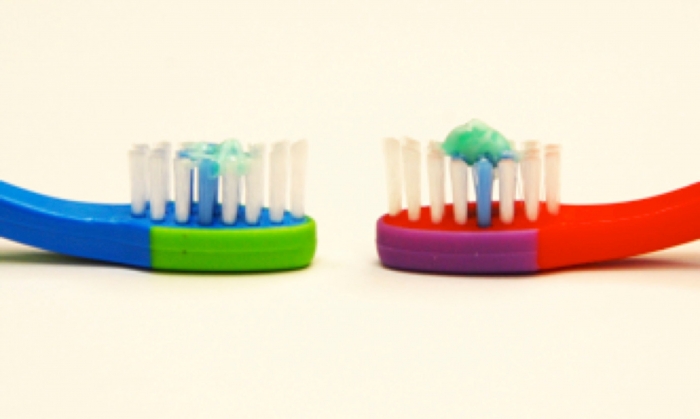You just had your first baby and cannot believe how fast time is going by! Before you know it, your baby’s first tooth will come in. Many parents believe that oral health and visiting a dentist is not needed in the first few years of life, especially since these are not your baby’s permanent teeth. Unfortunately, this is not true.
Did you know that baby teeth hold space for the permanent teeth lying just underneath the surface of the gums? That means any damage to your child’s baby teeth can spread to the permanent teeth and cause lifelong, expensive problems.
Cavities (also called tooth decay) are the most common chronic illness in the world. Cavities can form very early, even in your child’s first tooth. Almost half of the kindergarteners in Los Angeles County have already developed a cavity. By the 3rd grade, the majority (75%) of students have tooth decay.
Children from racial/ethnic minority groups have more cavities compared to White children. In Los Angeles, 63% of Latino children have had a cavity and Black/African American children are the most likely to have untreated cavities. Cavities seem so common, but they are not normal and can be prevented.
How do cavities form?
Cavities form when normal bacteria that live in your mouth combine with the sugars from your diet to create acid. These acids break down (or de-mineralize) your teeth and cause them to decay. When you take a break from eating or drinking, your teeth have a chance to heal (or re-mineralize) before the next meal.
Why are baby teeth important?
Teeth help children chew and digest healthy foods. Teeth are also needed to help your child form words when talking. They are important for self-esteem – we all want our children to be proud of their smiles.
When teeth decay, more than just your child’s mouth is affected. In addition to affecting a child’s growth and development, tooth decay can be very painful. Tooth pain causes difficulty focusing in school and missed school days. Decaying teeth can become easily infected, and these infections can spread to other parts of your child’s head.
Which children are at risk for early cavities?
While all children are at risk for developing cavities, some children are at higher risk. If you (as your child’s primary caregiver) have had cavities in the last 12 months, then your child is at higher risk of cavities. This is because cavity-causing bacteria can spread from you to your child through saliva, such as from sharing utensils or kissing your child.
Does your child always have a bottle or sippy cup of milk or juice in their hand? This also increases their risk of cavities significantly. Continuous bottle or sippy cup use with juice or milk does not give their mouth time to reverse damage caused by those decay-causing acids.
Children with special health care needs and babies who were born premature are specifically at high risk and should be followed by their pediatrician and a dentist closely.
You have the power to help prevent cavities for your child!
These recommendations can help prevent cavities in your family:
- As soon as your child has their first tooth, brush their teeth for 2 minutes with a fluoride-containing toothpaste before breakfast and at bedtime. In children less than 3 years old, use a grain-of-rice-sized amount of toothpaste; in children older than 3 years old, use a pea-sized amount.
- Make sure that your child does not fall asleep with a bottle as this increases their risk of developing cavities.
- Avoid using a bottle by age 12-14 months and transition to sippy or regular cups.
- Limit food and drink intake to three meals and two snacks a day.
- The only liquids your child needs are water and milk. Avoid juice and soda.
- Check to see if your drinking water has fluoride. If it does, it is recommended that your family drink tap water to get the right amount of fluoride to protect their teeth. Speak to your pediatrician or dentist if your drinking water does not have fluoride.
- Encourage your entire family to see a dentist. Your child’s first visit should be before their first birthday!
- Many providers accept Medicaid. Dental coverage for children is considered an essential health benefit by federal law. Free exams and cleanings should be offered by your insurance plan. Check your child’s specific dental benefits with your insurance provider. If you have or qualify for Medicaid (Medi-Cal), then you do not need to apply separately for dental coverage – it’s already included!
- Ask your pediatrician about a fluoride varnish at your next check-up for extra protection.


